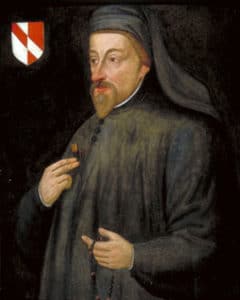A St. Valentine’s Day Story
He laid down his quill and took a deep breath. This moment was a St. Valentine’s Day story, coming alive.
He had been there for weeks, and it was easy to lose track of time. He sat on the floor of his cell among the soiled rushes, closing his eyes, if not his nose, to the smell. His crime was to have performed marriage rites for soldiers. He could do that for Christians, as long as the authorities turned a blind eye, but not for soldiers. Soldiers could not marry.
His had been a twofold crime: marrying soldiers, and being a Christian. His faith, like the faith of others, was usually overlooked until someone in authority needed a bout of intolerance and finger pointing.
His execution was tomorrow, death by beheading, a sentence customary for Roman citizens. He had been allowed to write a final note, and that’s what he was doing now. It was not a note to his church, his faithful, nor to his family. No, his final note was to the young woman, the daughter of his jailer. She had been dying, consumed with a raging fever, when her father, under the cover of late darkness and a bribed guard, had walked him, his arms and feet manacled, to his daughter.

The note, his final epistle, was to encourage her. She and her father had quietly joined the faith. He wrote carefully, without any words that might incriminate them. And then he signed it with his name.
“Your Valentine.”
There’s a lot about St. Valentine and the day named for him that we don’t know. Here’s what we do know. A number of early church martyrs were named Valentine. Two are associated with the St. Valentine whose day we celebrate with poetry, flowers, candy, cards, and romantic dinners.
One is Valentine of Rome, whose legend I’ve described above. He tends to be the more popular candidate. The second is Valentine of Terni, located some 65 miles northeast of Rome in Umbria. The two died about four years apart, Valentine of Rome an individual martyr and Valentine of Terni part of a wider persecution. They died about 269 and 273, respectively, and the church created the same feast day for both in the liturgical calendar in 496.

Geoffrey Chaucer
It was in the time of Geoffrey Chaucer in England that the feast day for St. Valentine became directly connected to love and romance. The times were caught up with chivalry and courtly love, and St. Valentine’s Day was a good fit. References to St. Valentine’s Day were worked into Hamlet by William Shakespeare, a poem by John Donne, and Edmund Spenser’s Faerie Queen. By the 1700s, people were exchanging flowers, candy, and cards. In the 19th century, what had been handwritten notes became mass-produced greeting cards.
Valentine’s Day is something of a global celebration, noted and celebrated in numerous countries outside Europe and the Americas, including Iran, Malaysia, China, India, Japan, Lebanon, Pakistan, Saudi Arabia, the Philippines, and more. I can remember many Valentine’s Days in elementary school, when the children would hang decorated paper bags for their classmates to drop valentines into (and eat the appropriate refreshments provided by the room mothers).
It is a day associated with love, and one form of literature is most associated with love—poetry. It can requited or unrequited love, lost or found love, idealistic love from afar or passionate love up close and personal. But it is about love.
BUY ‘HOW TO WRITE A FORM POEM’ NOW!
I loved you first: but afterwards your love
By Christina Rossetti
I loved you first: but afterwards your love
Outsoaring mine, sang such a loftier song
As drowned the friendly cooings of my dove.
Which owes the other most? my love was long,
And yours one moment seemed to wax more strong;
I loved and guessed at you, you construed me
And loved me for what might or might not be—
Nay, weights and measures do us both a wrong.
For verily love knows not ‘mine’ or ‘thine;’
With separate ‘I’ and ‘thou’ free love has done,
For one is both and both are one in love:
Rich love knows nought of ‘thine that is not mine;’
Both have the strength and both the length thereof,
Both of us, of the love which makes us one.
This Valentine’s Day, remember the story of the priest in his cell, waiting to die, and writing a final note to a girl he had healed, a girl he perhaps had loved, even for a moment. The girl whose letter he had signed, “Your Valentine.”
Photo by Marco Monetti, Creative Commons, via Flickr. Post by Glynn Young, author of the novels Dancing Priest and A Light Shining, and Poetry at Work.
- Poets and Poems: Sandra Marchetti and “Diorama” - April 24, 2025
- Poets and Poems: Christina Cook and “Roaming the Labyrinth” - April 22, 2025
- Longfellow’s “Paul Revere’s Ride”: Creating a National Legend - April 17, 2025



Laura Lynn Brown says
Thank you, Glynn. It’s good to be reminded that, truth or legend, this is where it started. I like the way you’ve imagined him, especially that “He wrote carefully, without any words that might incriminate them.”
Glynn says
There are those who claim that medieval monks invented St. Valentine, but the early church clearly established a feast day for him. Thanks for the comment, Laura!
SimplyDarlene says
This is a beautiful telling of an amazing story, Glynn. You have heart and skill for sharing truth and detail.
Glynn says
Thanks, Darlene. With a few words, I tried to get inside his head. And almost succeeded.
Bethany R. says
Love this piece, and how you start right off in the cell—I feel like I’m there with him.
The nobility of sacrificial love, and its source, are excellent to think about today. Thanks for this.
Glynn says
Thanks, Bethany!
Callie Feyen says
Haunting; like all beautiful love stories.
lynn says
I share my Valentine birthday with my mother so it’s doubly special! Interesting that there were two Valentines in history as well…enjoyed reading this post 🙂
Gaurav S Kaintura says
Interesting and Amazing.
Shahid says
Can you please give me the sonnet, that he wrote for his beloved?